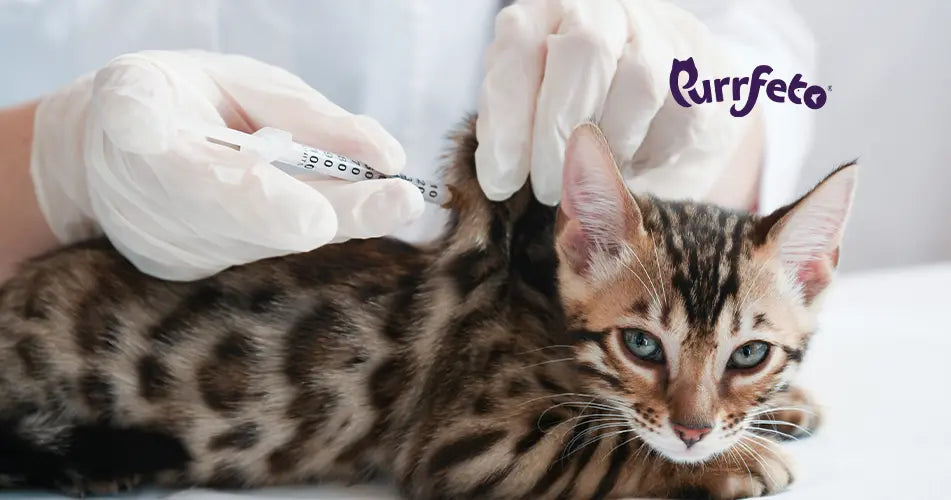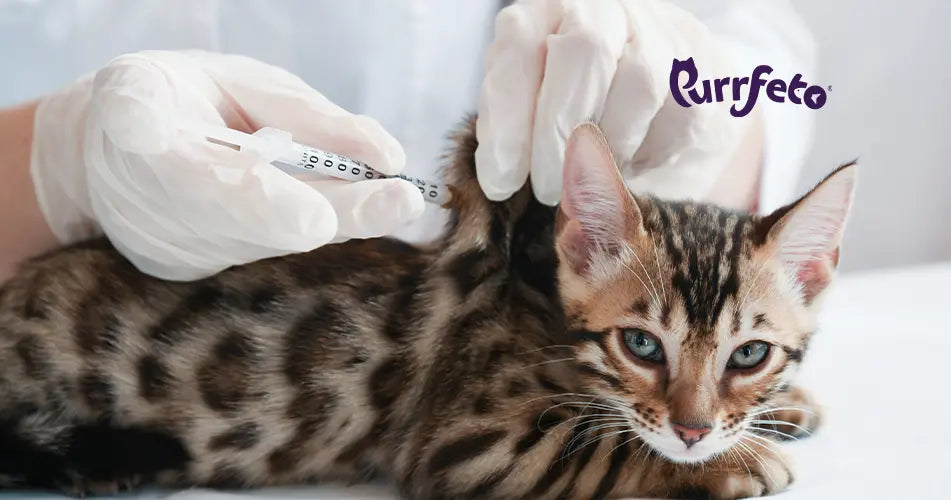Cats don’t always show symptoms when something is wrong. By the time they do, it can be serious. That’s why preventive care matters. One of the most important parts of that care is vaccination. It protects cats from deadly diseases that are common in India and elsewhere.
You can’t rely on just clean food and water. Germs travel. People carry them in. Shared spaces do the rest. And while a cat may seem fine today, exposure builds risk over time. That’s where a cat vaccine makes a difference. It trains their body to fight the real threat if it shows up.
Why Cat Vaccines Are Not Optional
Cat diseases in India range from highly contagious viral infections like feline panleukopenia, herpesvirus, and calicivirus to serious conditions such as feline leukemia. These illnesses can cause fever, appetite loss, eye and nasal discharge, or severe weakness, and some spread fast with high fatality rates, especially in kittens.
Cat parents sometimes assume indoor cats are safe. No outdoor exposure, no risk. But viruses can spread through air, clothes, bags, even human hands. A routine visit to the vet or a boarding facility can expose cats to serious illnesses.
Rabies is one example of a zoonotic disease. It’s fatal and can spread to humans. Then there’s panleukopenia, which hits fast and hard. Respiratory viruses like herpesvirus and calicivirus are also common, especially where multiple animals are kept. These are all preventable with feline vaccines. Vaccinating is not just protection. It’s responsibility.
Understanding Vaccine Types: Core and Non-Core Feline Vaccines Explained
Cat shots are grouped into two categories, i.e., Core and Non-core.
A. Core Vaccines
These vaccines are considered essential for every cat, no matter where they live or how much time they spend outdoors. They guard against common and serious illnesses that can spread quickly or cause long-term harm.
● Rabies: This is a deadly virus that affects the nervous system. It poses a risk to both animals and people. In most parts of India, rabies vaccination is mandatory by law.
● FVRCP (Feline Viral Rhinotracheitis, Calicivirus, and Panleukopenia): This is a combination vaccine that covers three major diseases. It is given as a single shot.
○ Feline Viral Rhinotracheitis - Triggered by feline herpesvirus, this illness causes sneezing, nasal discharge, and inflammation in the eyes and throat. It is highly contagious among cats.
○ Calicivirus - This infection targets the mouth and respiratory tract. Cats may develop ulcers, breathing problems, or joint pain. Some cases lead to long-term carrier status.
○ Panleukopenia - Often referred to as feline distemper, this disease spreads rapidly and is especially dangerous to kittens and adult cats. Symptoms include vomiting, diarrhoea, and sudden dehydration. It can be fatal without early treatment.
B. Non-Core Vaccines
These vaccines are recommended based on a cat’s exposure, living conditions, and health status. Not all cats require them, but for some, they are strongly advised.
● Feline Leukaemia Virus (FeLV): This virus affects the immune system and may lead to anaemia or lymphoma. It spreads through close contact, sharing bowls, or mutual grooming. Cats that go outdoors or live with other cats are at higher risk.
● Bordetella and Chlamydia: These are respiratory pathogens more commonly seen in shelters or catteries. Vaccination may be advised in environments where many cats live together or if the cat is being boarded regularly.
Kittens begin vaccinations at around 6 to 8 weeks. They get multiple doses, spaced a few weeks apart. Adults usually get boosters once a year (or according to their risk level). If your cat’s history is unknown, the vet may run blood tests before starting the cycle.
What is the Cat Vaccinations Cost in India?
The cost depends on the city and the clinic, but here’s a basic range based on current estimates: (source: Heads Up For Tails)
|
Vaccine |
Price |
Schedule for Kittens |
Schedule for Cats |
|
Rabies |
₹300 to ₹500 |
10-12 weeks |
Annual Shots |
|
FVRCP |
₹500 to ₹1,000 |
Primary Booster- 6-8 weeks Secondary Booster - 10-12 weeks Subsequent Boosters - 16 weeks |
Annual Shots |
|
FPV |
₹400 to ₹800 |
Conventionally included in FVRCP |
Annual Shots with FVRCP |
For a kitten going through the full schedule, the yearly expense might come to ₹2,000 to ₹3,000. Likewise, it’s usually less for adult cats (unless you’re starting fresh). Additionally, diverse animal welfare groups and NGOs assist with minimal-cost or free vaccines. Municipal drives, especially in urban areas, sometimes cover strays and newly adopted pets. Ask your vet about these options. It’s worth checking.
What About Side Effects?
Most cats are fine after their shots. However, the following side effects can be experienced post-vaccination:
● Some might feel tired, skip a meal, or rest more than usual (that’s normal).
● Others might get mild swelling at the injection site. Conventionally, these symptoms subside within a day or two.
● Serious reactions are rare. But if you see vomiting, trouble breathing, or collapse, call the vet immediately.
These are not common, but they do require urgent care. The truth is, the risk of not vaccinating is far greater.
How to Stay Organised
Many cat owners forget when the next dose is due. It happens. One way to stay ahead is to keep a physical card or a digital reminder. Mark the next date after every visit. If you move cities or change vets, this record helps avoid repeat doses or missed timelines. It also helps during emergencies, travel plans, or pet boarding.
Pairing Vaccination with Cat Nutrition
Vaccines work best when the cat is healthy. If a cat is underweight, malnourished, or stressed, its immune system might not respond as expected. That’s where good food steps in. Purrfeto offers carefully developed cat food that supports immunity, energy, and digestion.
Need help picking the right food? Read our blog How to Choose Healthy Food for Cats - it will walk you through exactly what to look for
All Purrfeto products are created to fulfil the specific needs of kittens and adult cats. There are no unwanted fillers. Just the right blend of proteins, vitamins, and support for long-term health. This is not just about taste. Cats need food that helps them build resistance and recover well after vaccines. Brands like Purrfeto make that part easier.
Can Vaccines Prevent all Illness?
No! However, vaccines do reduce the intensity and possibility of infection. Therefore, if a vaccinated cat falls sick, the odds of recovery significantly increase with fewer complications. That’s the point. Prevention lowers risk, protects health, and saves money over time.
Skipping vaccines increases the chance of hospital stays, high treatment bills, and in some cases, the loss of a pet. For something that costs a few thousand rupees a year, it’s not worth gambling.
Final Word
Cat vaccination isn’t just about today - it’s a shield for tomorrow. It protects pets from deadly diseases like rabies and zoonotic also transmit to humans. Thus, vaccination is critical in saving your pet's life and safeguarding your loved ones.
The cost is manageable, but the benefit is life-saving. Every cat deserves that protection - whether in a flat, a farmhouse, a foster home or a street cat. Pair vaccines with premium cat food, vet checkups, and a calm environment, and your cat will thrive.
Cats show their trust in the way they curl up near you. Protecting them is part of that bond. Start with the first dose and stick to the schedule



 Back to Blogs
Back to Blogs 





